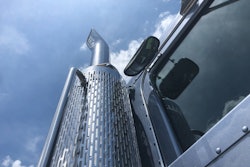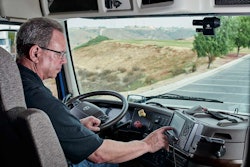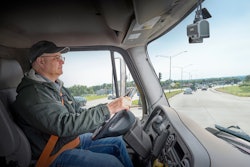Among motor carriers' largest costs are the amount of fuel consumed per trip and unsafe driving that leads to collisions, and the insurance premium spikes that follow. A 2022 study by the Traffic Injury Research Foundation (TIRF) found that fuel efficient and eco-driving can lead to fuel cost savings of up to 15%, and the additional layer of an in-vehicle monitoring system, which provides real-time feedback to drivers, can significantly reduce the risk of traffic collisions.
The study, which was discussed Sunday at the American Trucking Associations Management Conference and Exhibition in Nashville, revealed that eco-driving was associated with a 7% reduction in the odds of a hard-braking event; 8% reduction in the odds of a hard left-turn event; 8% reduction in the odds of a hard right-turn event; and 4% reduction in the odds of a collision. Four carriers participated in the study, which included more than 2,700 drivers and nearly 212 million miles of driving exposure.
[Related: Eco-driving coaching can improve driver safety performance]
Three of the companies were users of ISAAC Instruments. Using the ISAAC Coach to judge a driver’s performance, the study noted that a driver score of over 80 can result in fuel cost savings of up to 15% compared with lower performing drivers.
Driver behavior accounts for upwards of 30% of a truck's miles per gallon score, noted ISAAC Instruments Chief Sales Officer Sam Sussenguth.
The study revealed driving in top gear with steady speeds close to 63 mph can significantly decrease stability control events by 34%. In addition, a 1% increase in the amount of time spent driving using cruise control reduced the number of hard-braking events by 3%.
Ward Vanlaar, TIRF chief operating officer, noted eco-driving isn't solely about the speed of the truck, adding hard left and right turns, gear shifting, harsh braking, and route planning all play important roles. A driver's age, too, is a variable, Vanlaar, said, adding that more experienced drivers generally have fewer incidents of hard-braking.
"Young drivers are not good, smooth drivers," he said, adding an increase in a driver's age by just one year is associated with a 9% reduction in odds of a hard braking event.
Technology's role
Instantaneous feedback and real-time coaching enabled by telematics and similar technologies are keys to uncovering unsafe driving habits early, and correcting them soon enough to reap the benefits.
Sussenguth noted that platforms like the ISAAC Coach, along side real time in-cab coaching, gives drivers a report at the end of their trip showing how their driving results compare with targeted results, and use of the ISACC Coach routinely shows improvement in fuel economy versus drivers not using it.













